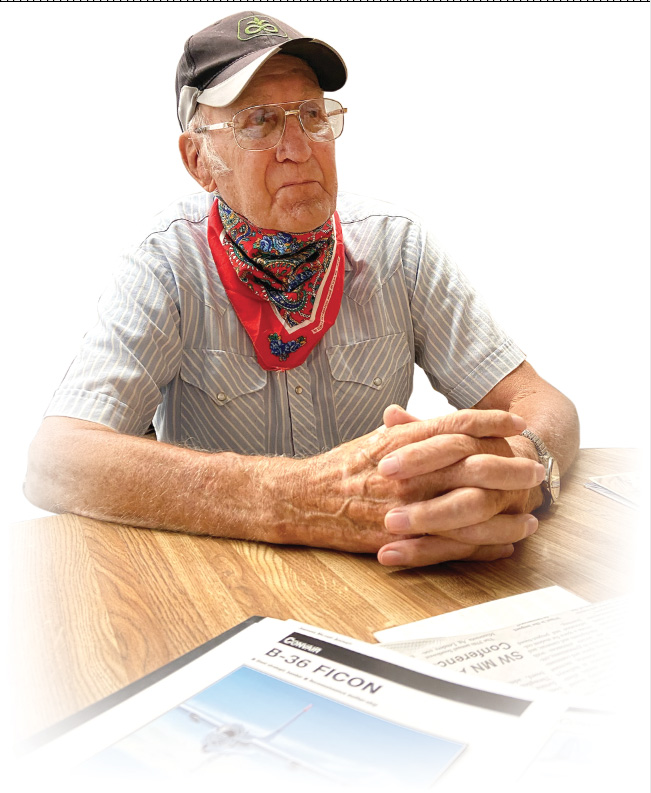
On this Veterans’ Day, Ray Maeyaert shares his memories about being an electrician on B-36 bombers during the Korean War
By Per Peterson
Before the B-52 came along, the United States’ master of the air was the B-36, and Ray Maeyaert knew those bombers very well.
“The B-36 was not aluminum, it was magnesium alloy,” Maeyaert said. “So when that thing caught fire, you better run. But I remember when we got the first one in — gee, that was a pretty bird.”
Two years after he entered the Air Force in 1945, Maeyaert was sent overseas. He was in charge of the in-flight kit in the bombers, which is where all the fuses for the aircraft were kept.
“Those had to be on every bomber, even for test flights,” said Maeyaert.
Each bomber carried between 12 and 17 men.
“I just flew along, and if there was a problem, I knew how to fix it,” Maeyaert said.
Maeyaert was an electrician on B-36 FICON bombers known as the “Big Stick” during the Korean War as a member of the United State Air Force’s 92nd bomb wing.
He had hoped to become an electrician in the service, but when he got out of basic training, there wasn’t any need for electricians, so he was sent to Denver for schooling. He also earned his high school diploma during that time.
“They had refresher courses you could take — instead of going on leave, I studied,” Maeyaert said. “By the time I got to Denver I had my high school diploma, which got me into electrician school. I thought I could never keep up, because most of the guys there had two years of college. But I got through it pretty fine.”
Maeyaert explained that the electrician would sit behind the co-pilot, facing the opposite way. He remembers how the bombers were so weighted down by fuel and bombs, that the men needed to use a rope to get from one end to another.
See this week’s Headlight Herald for more on this article.
